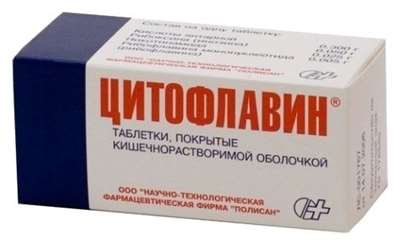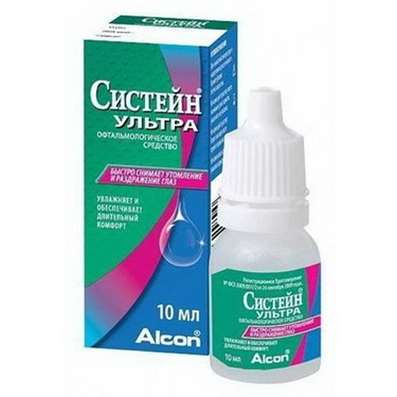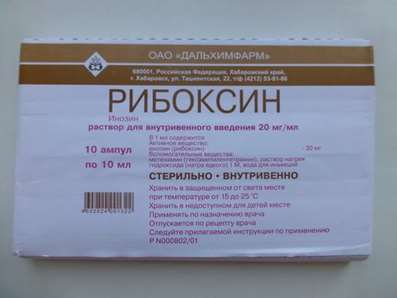Instruction for use: Platyphylline (Platyphyllinum)
I want this, give me price
chemical name
3-ethylidene-6-hydroxy-5,6-dimethyl-perhydro-1,8 dioksatsiklododeka [2,3,4-gh] pyrrolizine-2,7-dione (as the tartrate)
Pharmacological group
M Cholinolytics
antispasmodics myotropic
The nosological classification (ICD-10)
H599 * Diagnosis / eye disease diagnostics
Angioscopy iris, Gonioscopy, Diagnosis in Ophthalmology, Differential diagnosis of the type of injection of the eyeball, A study of the fundus, A study of the fundus and lens, Control of the rear segment of the eye state, mydriasis, Examination of the retina during surgery, Examination of the retina after surgery, Definition of manifest refraction, Determination of refraction, Determination of refraction using skiascopy, Ophthalmic diagnostics, funduscopy, pupil dilation, Creation of mydriasis, Creating cycloplegic, Fluorescein angiography of retinal vessels, electroretinography
I10 Essential (primary) hypertension
Hypertension, Arterial hypertension, Arterial hypertension crisis course, Essential Hypertension, Primary hypertension, Arterial hypertension, complications of diabetes, hypertension, The sudden increase in blood pressure, Hypertensive disorders of blood circulation, hypertensive condition, hypertensive crises, hypertension, arterial Hypertension, malignant Hypertension, Hypertonic disease, Hypertensive crisis, Hypertension, accelerated hypertension, malignant hypertension, The aggravation of hypertensive disease, Transient hypertension, Isolated systolic hypertension
I15 Secondary hypertension
Arterial hypertension, complications of diabetes, hypertension, The sudden rise in blood pressure, Hypertensive disorders of blood circulation, hypertensive condition, hypertensive crises, hypertension, arterial hypertension, malignant hypertension, Hypertensive crisis, Hypertension, accelerated hypertension, malignant hypertension, hypertensive crisis, The aggravation of hypertensive disease, Transient hypertension, hypertension, Arterial hypertension, Arterial hypertension crisis course, renovascular hypertension, symptomatic hypertension, renal hypertension, Renovascular hypertension, Symptomatic hypertension
I20 Angina [cardiac angina]
heberden disease, Angina pectoris, The attack of angina pectoris, recurrent angina, Spontaneous angina, Stable angina pectoris, angina, Angina (attack), Angina rest, Angina progressing, Angina mixed, Angina spontaneous, stable angina, Chronic stable angina, Angina Syndrome X
J45 Asthma
Asthma physical effort, status asthmaticus, Bronchial asthma, Asthma lung flow, Bronchial asthma with obstruction of sputum discharge, Bronchial asthma heavy currents, Bronchial asthma physical effort, hypersecretory asthma, Hormone-dependent form of bronchial asthma, Relief of asthma attacks in bronchial asthma, Non-allergic asthma, nocturnal asthma, Exacerbation of asthma, Asthma attacks, Endogenous forms of asthma, Night asthma, Cough with bronchial asthma
K21 Gastroesophageal reflux
Biliary reflux esophagitis, gastrocardiac syndrome, Gastroesophageal reflux disease, Gastro-oesophageal reflux disease, Non-erosive reflux disease, syndrome gastrocardiac, Remhelda syndrome, Erosive reflux esophagitis, Ulcerative reflux esophagitis
K25 Gastric ulcer
Helicobacter pylori, Pain syndrome in gastric ulcer, Pain syndrome in gastric ulcer and duodenal ulcer, Inflammation of the gastric mucosa, Inflammation of the gastrointestinal mucosa, Benign gastric ulcer, The disease of the stomach and duodenum, asotsiirovannoe with Helicobacter pylori, Aggravation gastroduodenita on the background of peptic ulcer, Exacerbation of peptic ulcer, The aggravation of gastric ulcer, The organic gastrointestinal disease, Peptic ulcer of the stomach and duodenum, Postoperative gastric ulcer, Recurrent ulcers, Symptomatic gastric ulcers, Chronic inflammatory disease of the upper gastrointestinal tract, associated with Helicobacter pylori, Helicobacter pylori eradication, Erosive and ulcerative lesions of the stomach, Erosive lesions of the stomach, The erosion of the gastric mucosa, Peptic ulcer disease, Stomach ulcer, Gastric lesion, Ulcerative lesions of the stomach, Symptomatic ulcers of the stomach and duodenum
K26 Duodenal Ulcer
Pain with duodenal ulcer, Pain syndrome in gastric ulcer and duodenal ulcer, The disease of the stomach and duodenum, asotsiirovannoe with Helicobacter pylori, Exacerbation of peptic ulcer, The worsening of duodenal ulcer, Peptic ulcer of the stomach and duodenum, Relapse of duodenal ulcers, Symptomatic ulcers of the stomach and duodenum, Helicobacter pylori eradication, Erosive and ulcerative lesions of the duodenum, Erosive-ulcerative lesions of duodenal ulcers associated with Helicobacter pylori, Erosive lesions of the duodenum, Duodenal ulcer, Ulcerative lesions of the duodenum]
K59.8.1 * intestines Dyskinesia
Pain smooth muscle spasm, Pain spasm of smooth muscles (renal and biliary colic, intestinal spasms, dysmenorrhea), Pain spasm of smooth muscles of internal organs, Pain spasm of smooth muscles of internal organs (kidney and biliary colic, intestinal spasms, dysmenorrhea), intestinal hypomotility, Hypotonic dyskinesia of the colon, GIT Dyskinesia, Dyskinesia gastrointestinal atony with events,colon Dyskinesia,Gastrointestinal spasm, Intestinal colic, Colic in infants, Spastic bowel dyskinesia, Spastic colon dyskinesia, Baby colic
K80.5 stones of bile duct without cholangitis or cholecystitis
Obstruction of common bile duct, Stones of the common bile duct, biliary colic, Colic liver, Hepatic colic, Cholesterol gallstones in the common bile duct
K82.8.0 * Dyskinesia of the gallbladder and biliary tract
Biliary obstruction, Biliary reflux gastritis, Biliary reflux esophagitis, biliary sludge, Pain smooth muscle spasm, Pain spasm of smooth muscles (renal and biliary colic, intestinal spasms, dysmenorrhea), Pain spasm of smooth muscles of internal organs, Pain spasm of smooth muscles of internal organs (kidney and biliary colic, intestinal spasms, dysmenorrhea), Gipermotornaya biliary dyskinesia, Hypokinesia of the gall bladder, Hypokinetic dyskinesia of the gallbladder, Biliary dyskinesia, Dyskinesia of the gallbladder,Dyskinesia of biliary tract, biliary colic, Bile reflux,Violation of bile secretion, Violation of the outflow of bile, Subacute and chronic diseases of the biliary tract, The spasm of the biliary tract, Biliary tract spasm, Spastic biliary dyskinesia, Spasmodic dyskinesia of the gallbladder, Spastic condition of the gastrointestinal tract
K85 Acute pancreatitis
Acute pancreatitis, pancreatitis, Pancreatitis haemorrhagic, acute Pancreatitis, Sepsis pancreatogenic, Acute necrotizing pancreatitis, edematous pancreatitis
K86.1 Other chronic pancreatitis
Chronic pancreatitis, recurrent pancreatitis, chronic Pancreatitis, Exacerbation of chronic pancreatitis, Pancreatitis with exocrine insufficiency
N23 Renal colic unspecified
Pain in renal colic, Pain smooth muscle spasm, Pain spasm of smooth muscles (renal and biliary colic, intestinal spasms, dysmenorrhea), Pain spasm of smooth muscles of internal organs, Pain spasm of smooth muscles of internal organs (kidney and biliary colic, intestinal spasms, dysmenorrhea), renal Colic, ureteral colic, Renal colic, Renal colic with urolithiasis, Kidney disease, Spasm of smooth muscle in diseases of the urinary system, The spasm of the urinary tract, The spasm of the ureter, The spasm of the ureters, Spasms of the urinary tract, Spasms of the urinary tract
R00.1 Bradycardia, unspecified
bradyarrhythmias, bradycardia
R07.2 Pain in the heart
neuroses of the heart, Myocardial ischemic pain, Pain syndrome in myocardial infarction, cardialgia, cardioneurosis, Cardiac syndrome, Pain in cardiac patients, Cardialgia on background dyshormonal myocardial dystrophy, Functional cardialgia, Psevdostenokardiya, pericardial pain
R10.1 Pain localized in the upper abdomen
Pain in the stomach, Pain in the upper abdomen, The pain in the epigastric region, epigastric pain, Pain in acute pancreatitis, Pain in the stomach, Epigastric pain, Pain in acute gastritis with high acidity, The pain in chronic gastritis with high acidity, stomachalgia, Discomfort and pain in the epigastric, Gastric discomfort, The feeling of discomfort in the epigastric region, The severity of epigastric, Epigastric pain, Pain in pancreatitis, Discomfort and pain in the epigastric region
R10.4 Other and unspecified abdominal pain
Abdominal pain, Gastrointestinal spasm, intestinal colic, Colic in infants, The feeling of fullness, Resi abdominal, Spasm of smooth muscle in diseases of the digestive tract, The spasm of the biliary tract, Biliary tract spasm, enterospasm, Spasm of the digestive tract, Spasms of the digestive tract smooth muscle, stomach Cramps, gastrointestinal spasms, Spastic condition of the gastrointestinal tract, intestinal tenesmus, Feeling of fullness, Baby colic
R52.2 Other constant pain
Pain syndrome, rheumatic origin, Pain at vertebral lesions, Pain in the chamber, Pain for burns, Pain syndrome weak or moderate, Perioperative pain,Moderate to severe pain, Moderately or weakly expressed pain syndrome, Moderate to severe pain, Ear pain of otitis, Neuropathic pain, neuropathic pain
T57.0 Toxic effect of arsenic and its compounds
arsenic Intoxication, arsenic poisoning, Poisoning with arsenic
T65.9 Toxic effect of unspecified substance
idiosyncrasy toxic, Intoxication nitro compounds, Intoxication toxins, Professional intoxication, Poisoning nitrites, Poisoning toxins
Code CAS 480-78-4
Characteristics
Alkaloid ragwort (rombolistny or latifolia).
White crystalline powder, bitter taste, easily soluble in water (1: 5 in hot, cold 1:10), slightly soluble in alcohol. pH 0,2% solution - 3.6-4.0.
Pharmacology
Mode of action - antispasmodic, vasodilating, sedative.
Does m-cholinergic receptors and has a direct relaxing effect on smooth muscle. Dilates blood vessels, lowers the tone of the smooth muscle of the bile ducts and gall bladder, bronchus, causing mydriasis.
Quickly and adequately absorbed from the gastrointestinal tract. Easily it passes through the blood-tissue barriers, cellular and synaptic membranes. When a large dose accumulates in the central nervous system tissues in significant concentrations. Excreted urinary and digestive systems. When properly administered (dose intervals between doses) does not accumulates.
Indications
Smooth muscle spasm in gastric ulcer and duodenal ulcer, intestinal, liver and renal colic, asthma, hypertension, angina pectoris, spasms of cerebral vessels, pain in pancreatitis, pancreatic coma, biliary dyskinesia, reflux esophagitis, bradyarrhythmias, poisoning acetone, boric acid, strong acids, arsenic, reserpine, diarrhea (urgency), in ophthalmic practice - to expand the pupil for diagnostic and therapeutic purposes.
Contraindications
Glaucoma, liver failure and kidney function, paralytic ileus, or intestinal atony, ulcerative colitis, myasthenia gravis.
Side effects
Dry mouth, mydriasis, disturbance of accommodation, palpitation, reduction in blood pressure, shortness of breath, bowel atony, urinary retention, agitation, convulsions.
Interaction
Increases the duration of hypnotic effect of pentobarbital and sodium etaminal blocks the effects of neostigmine increases - appointed interior H2-gistaminolitikov, digoxin and riboflavin (slows peristalsis and improves absorption). Adrenomimetiki (increase mydriasis) and nitrates potentiate the increase in intraocular pressure, amizil, diphenhydramine, tricyclic antidepressants, quinidine sulfate, procainamide, disopyramide, isoniazid, MAO inhibitors, midantan - anticholinergic activity. Eliminates bradycardia, nausea and vomiting induced by morphine, bradycardia while taking verapamil.
Overdose
Symptoms: dry mouth, hoarseness, swallowing disorder, dilated pupils with absence of reaction to light, tachycardia, hyperthermia, redness of the skin, the excitement of the CNS, followed by depression, impaired consciousness, hallucinations, convulsions, respiratory failure, intestinal paresis, acute urinary retention .
Treatment: forced diuresis, administration of cholinesterase inhibitors (physostigmine, neostigmine or galantamine), debilitating intestinal paresis and reduce tachycardia; with moderate excitation and convulsions unexpressed recommended the introduction of magnesium sulfate, in severe cases - sodium hydroxybutyrate, oxygen therapy, mechanical ventilation.
Routes of administration
Inside

 Cart
Cart





